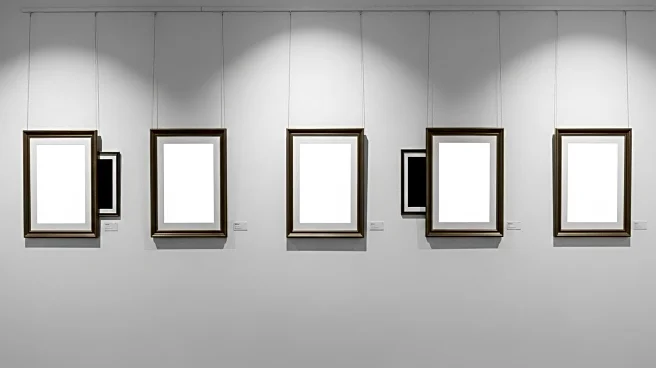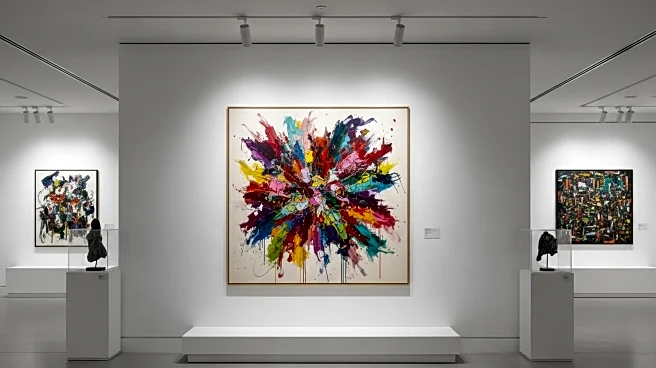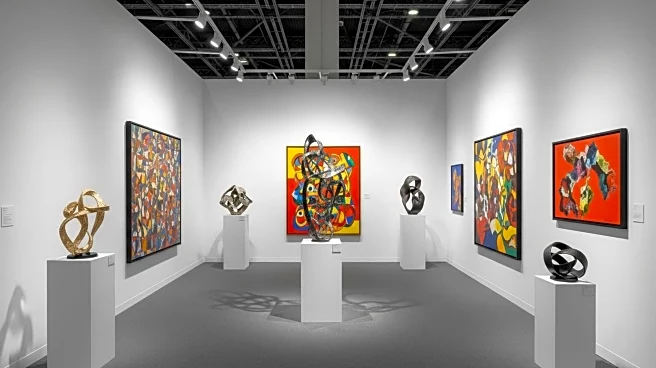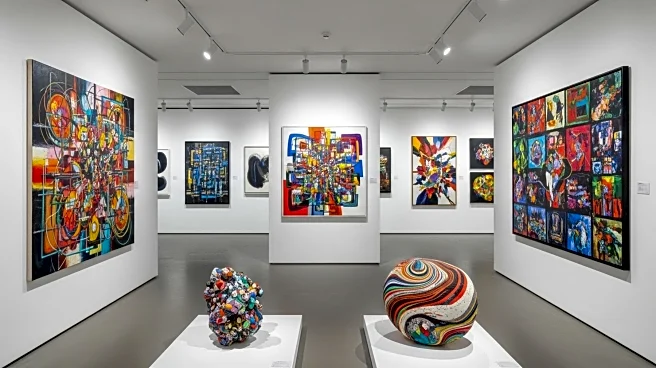What's Happening?
The art market is experiencing a significant downturn, with numerous galleries closing due to financial strain. Clearing gallery, a New York-based art space, recently announced its closure after struggling with high operational costs and declining demand for art. The gallery had attempted to innovate by hosting exhibitions in a villa during the Art Basel fair, but ultimately could not sustain its business model. This closure is part of a broader trend affecting the art industry, with other prominent galleries like Blum, Venus Over Manhattan, and Kasmin also shutting down. The decline in art sales is attributed to high overhead costs, reduced spending by major collectors, and a saturated market with too many advisors, galleries, and artists. The contraction began quietly after Art Basel in 2022, but has become more pronounced, with auction sales dropping significantly.
Why It's Important?
The downturn in the art market has significant implications for the industry and its stakeholders. Galleries are facing financial challenges due to high fixed costs and declining sales, leading to closures and downsizing. This affects artists, collectors, and dealers, as the market struggles to find a new balance. The decline in primary market sales and auction results indicates a shift in collector behavior, with many reducing their spending or exiting the market altogether. This contraction could lead to a reevaluation of pricing strategies and business models within the art industry. The situation highlights the need for adaptation and innovation to survive in a changing market landscape.
What's Next?
As the art market continues to contract, galleries may need to explore new business models and strategies to remain viable. Some dealers are already experimenting with alternative approaches, such as seasonal business operations and creating unique experiences for collectors. The industry may see further closures and downsizing as galleries reassess their financial sustainability. There is potential for a shift in the market dynamics, with younger galleries and dealers adapting more quickly to the changing environment. The downsizing could pave the way for new opportunities and a more sustainable art market in the future.
Beyond the Headlines
The art market's downturn raises questions about the sustainability of current business practices and the role of art as an asset class. The reliance on high prices and speculative buying has contributed to the market's instability. As the industry faces financial challenges, there may be a cultural shift towards valuing art for its intrinsic qualities rather than as an investment. This could lead to a more thoughtful and engaged collecting community, focusing on the artistic merit and cultural significance of works rather than their potential financial returns.











